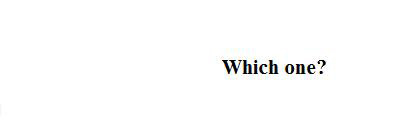cozy// ฅ^•ﻌ•^ฅ



cozy// ฅ^•ﻌ•^ฅ
More Posts from Wet--moss and Others


“Every moment on the summer festival, new stories were brought to life. People grow, mature, and grow old. They set off the fireworks, so that it would reflect themselves from back in the times.” “Fireworks aren’t forever, but I think all the feelings within it, goes down in eternity with Inazuma.”
Genshin Impact: Yoimiya -Sketch Animation「Fireworks are for now, but friends are forever 」


Well
<3






Bisexual monoma icons requested by @svyatoivo
Free to use, just reblog!
Requests are open!

The boys belong to @marka-sammal (@insomniac-incubus )
Eph, Phil and Alan: a polyam trio of an incubus, a witch and an elf


violence.









🌈|🌈|🌈
🌈|🌈|🌈
🌈|🌈|🌈
How to read a scientific article
Hey y’all! This post is aimed at people who are making the transition from textbook-based science classes to article-based science classes. Scientific journal articles are dense compared to textbooks and aren’t written with the intent to teach basic concepts but rather with the intent to expand scientific knowledge. It can often be very confusing to figure out what is going on. Here’s how I was taught to read them 10+ years ago and how I still approach them today.
(I) After reading the title, start for real with the Results section.
Why would you do this when you know the abstract will give you a basic overview of the study and the introduction will set the context? Because you want to be an active reader. You want to figure out what happened in this study in a way that makes sense to you rather than be able to parrot what the author’s say happened. This is the major difference between reading a textbook (where you need to regurgitate the information later) and reading an article (where you need to be able to intelligently discuss the content either in class or in writing).
Look at the tables and figures first. Can you tell what the independent variables were? What the dependent variables are? What might the relationship between them be? What trends or patterns do you see? Depending on your style, it may be a good idea to mark up your document with this information or jot some notes down somewhere else.
Now read the text part of the results. What parts of the figures are the authors choosing to highlight in the text? Are there any results buried in the text that you can’t connect to part of a figure?
Now pause and think. What is the most important result of the study? Highlight where this appears in the text and figures. Remember that important doesn’t necessarily mean statistically significant! A good p-value doesn’t signify real-world meaning; you need to make that connection yourself. Take a moment in this step to notice what results still don’t make sense to you– no need to panic or write questions down yet because you haven’t read the rest of the paper.
(II) Get the gist of the Methods.
Chances are your professor did not assign you this reading with the intent to make you replicate the study. You don’t have to understand every sentence (or even most sentences!) of the methods unless you’re an advanced graduate student. You do have to be able to explain in layman’s terms what the researchers did.
Particularly important questions to answer that can be found in the text include: What were the independent variables? What were the dependent variables? What variables were controlled for, either statistically or through researcher manipulation? What statistical methods were used to look for an association? In health research, we use the acronym PECOT to deconstruct method’s sections.
P = population– who was being studied?
E = exposure– what variable were the researchers trying to determine the impact of? This might be an intervention (ie., a smoking cessation video) or something outside researchers’ control (ie., at least 5 years of daily smoking).
C = comparison– who is the population of interest going to be compared to? This may be a formal control group (ie., smokers who were shown a video on handwashing) or something outside researchers’ control (ie., former smokers of a similar demographic background who haven’t had a cigarette in 5 years).
O = outcome– what were the researchers looking for? This is also known as the independent variable.
T = time– how long were participants/subjects tracked and when were measurements taken?
(III) Read the Introduction.
Now that you have a very good idea about the design and results of the study, you’ll be better able to understand the introduction of the study. The basic goal of an introduction in any scientific paper is to explain why the study happened. The background may give you some helpful context, or it may be redundant at this point. I typically don’t spend much time on the introduction except for the end where the study purpose/research question and hypotheses are usually written. Mark these in the text! You should already have a good idea of the study’s purpose from the methods and results. Here’s some questions you should answer internally or in your notes at this point:
Did the methods align with the purpose?
Did the results support the hypothesis?
What are the scientific implications of these results?
(IV) Read whatever is at the end of the article: Discussion, Conclusion, Reflection, Limitations, Research Implications etc.
It is very important that you save these sections for last because these sections are where researchers tell you what to think of the results. You need to be prepared to critically engage with their interpretation of the results by already having your own. That’s what the three questions above are about! Of course, the discussion was probably written by multiple advanced scientists and you are but a lowly student. That doesn’t mean you should accept their conclusions without seeing their logic. As you read the discussion, think about these questions:
Do the researchers think the results support the hypothesis?
How are the researchers interpreting the primary results? [Bonus: what other interpretations are there, and are they mentioned?]
What do the researchers think the scientific implications of these results are?
What limitations do the researchers acknowledge, and how could those limitations be impacting the results?
(V) Synthesize it.
Try to boil down everything in the paper to just a few sentences that an 8th grader could understand. Whether you think through it internally or write it down is up to you. I usually print out my readings and write my synthesis on the blank back page using the following sentences starters:
The researchers wanted to know whether…
They found that…
This means that…
Taking the time to write the synthesis and any lingering questions you have can be really helpful if, like me, you do reading far in advance of class and need a quick refresher to glance at before class starts. It can also be helpful for paper writing or exam studying later. Consider revising your synthesis after you participate in the class discussion or hear your professor’s take on the article in lecture. Don’t rely on the abstract– that’s someone else’s synthesis, not yours.
—
I hope this was helpful!! Don’t feel bad if this process is ridiculously time consuming. I have spent probably 3-4 hours on a 5-page study before. The goal of science writing is to be as concise as possible, which makes reading short articles more difficult than longer ones. I am a graduate student at a top American university, and I typically read 9-12 articles per week this deeply. If a professor assigns more than 4 research study articles per week for a regular course, make sure they explain what students are supposed to be getting out of each article so you can target your reading better. Chances are, you can skip some sections and focus on coming to class with clarifying questions rather than a firm understanding.
Happy reading!!
@phd-one-day
just a little something while we wait for the next chapter. the theme of an iconic power trio for our own big three. no i do not take criticism.
my fucking god! these bitches gay! good for them, good for them!











-
 crystalheartsam reblogged this · 5 months ago
crystalheartsam reblogged this · 5 months ago -
 crystalheartsam liked this · 8 months ago
crystalheartsam liked this · 8 months ago -
 autumnwillowemery liked this · 10 months ago
autumnwillowemery liked this · 10 months ago -
 coffeeioy liked this · 1 year ago
coffeeioy liked this · 1 year ago -
 stress-free-album liked this · 1 year ago
stress-free-album liked this · 1 year ago -
 aerohmantics liked this · 1 year ago
aerohmantics liked this · 1 year ago -
 velvet-sorrows liked this · 1 year ago
velvet-sorrows liked this · 1 year ago -
 lilalulaberry liked this · 1 year ago
lilalulaberry liked this · 1 year ago -
 kitssues reblogged this · 2 years ago
kitssues reblogged this · 2 years ago -
 starymx liked this · 2 years ago
starymx liked this · 2 years ago -
 warufuwa liked this · 2 years ago
warufuwa liked this · 2 years ago -
 greenstorm64 liked this · 2 years ago
greenstorm64 liked this · 2 years ago -
 window-core reblogged this · 2 years ago
window-core reblogged this · 2 years ago -
 window-core liked this · 2 years ago
window-core liked this · 2 years ago -
 eldritchbrainrot liked this · 2 years ago
eldritchbrainrot liked this · 2 years ago -
 kijx liked this · 2 years ago
kijx liked this · 2 years ago -
 randoms-aesthetic-blog reblogged this · 2 years ago
randoms-aesthetic-blog reblogged this · 2 years ago -
 optimisticgalaxynightmare reblogged this · 2 years ago
optimisticgalaxynightmare reblogged this · 2 years ago -
 wings-and-cherry-blossoms liked this · 2 years ago
wings-and-cherry-blossoms liked this · 2 years ago -
 frostaches liked this · 2 years ago
frostaches liked this · 2 years ago -
 restinglennyface reblogged this · 3 years ago
restinglennyface reblogged this · 3 years ago -
 restinglennyface liked this · 3 years ago
restinglennyface liked this · 3 years ago -
 yuridemon liked this · 3 years ago
yuridemon liked this · 3 years ago -
 daoinesidhee reblogged this · 3 years ago
daoinesidhee reblogged this · 3 years ago -
 boobenjoyers reblogged this · 3 years ago
boobenjoyers reblogged this · 3 years ago -
 boobenjoyers liked this · 3 years ago
boobenjoyers liked this · 3 years ago -
 manerv liked this · 3 years ago
manerv liked this · 3 years ago -
 okaywinterr reblogged this · 3 years ago
okaywinterr reblogged this · 3 years ago -
 finnolotl liked this · 3 years ago
finnolotl liked this · 3 years ago -
 marimossie reblogged this · 3 years ago
marimossie reblogged this · 3 years ago -
 cielosphere liked this · 3 years ago
cielosphere liked this · 3 years ago -
 madpostshit liked this · 3 years ago
madpostshit liked this · 3 years ago -
 librariumth-ad-infinitium liked this · 3 years ago
librariumth-ad-infinitium liked this · 3 years ago -
 lesbi-anne-aesthetics reblogged this · 3 years ago
lesbi-anne-aesthetics reblogged this · 3 years ago